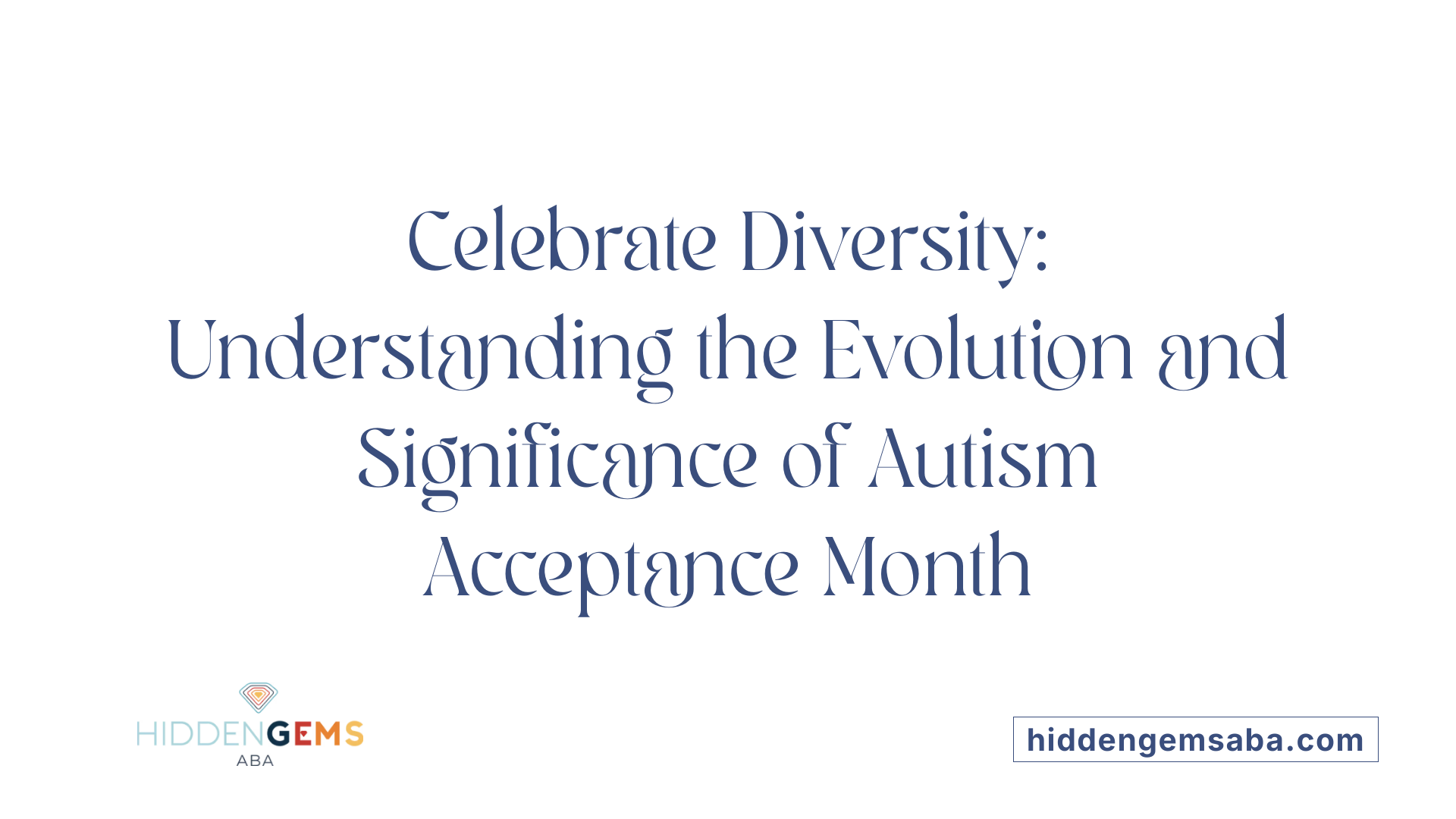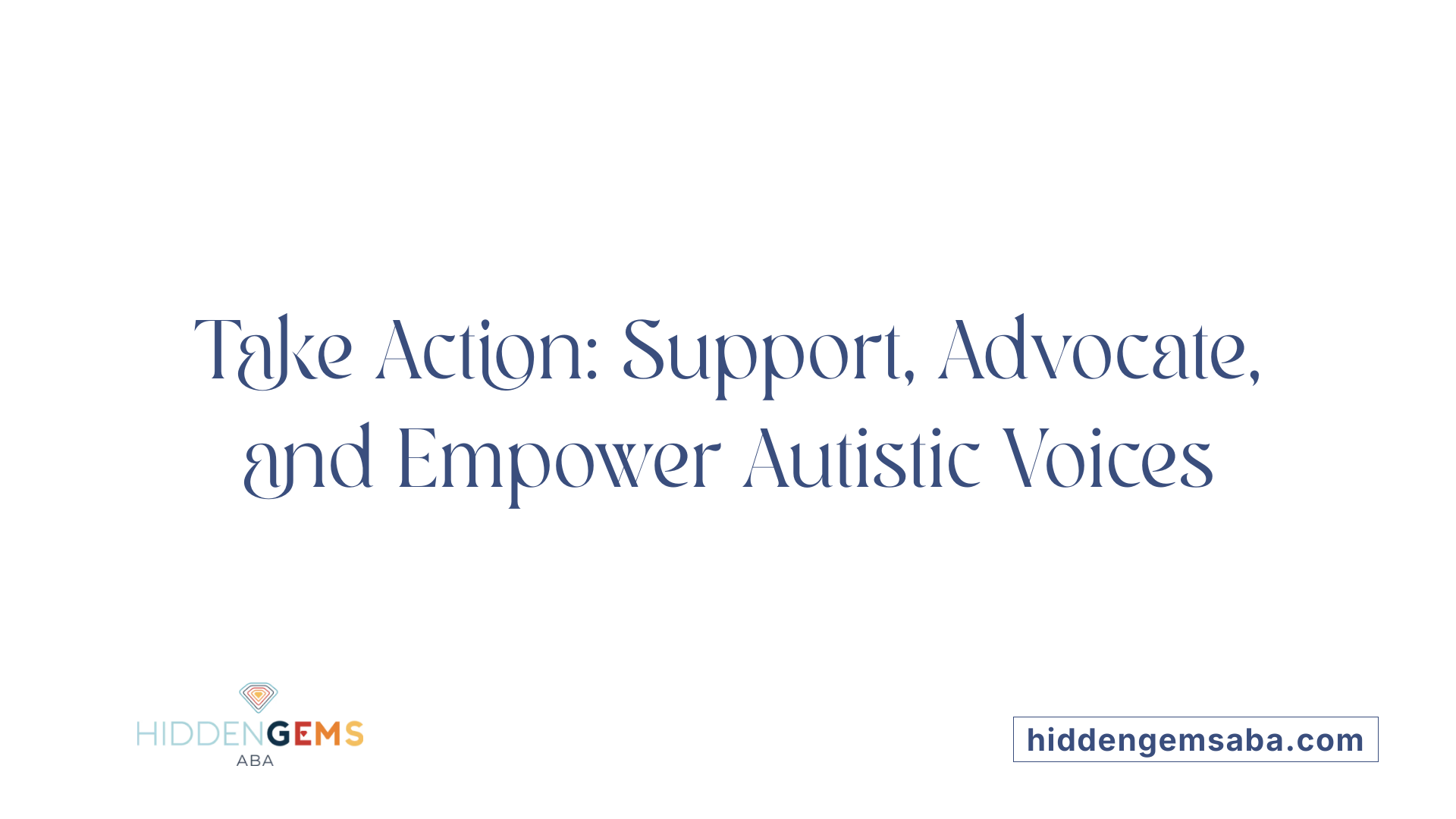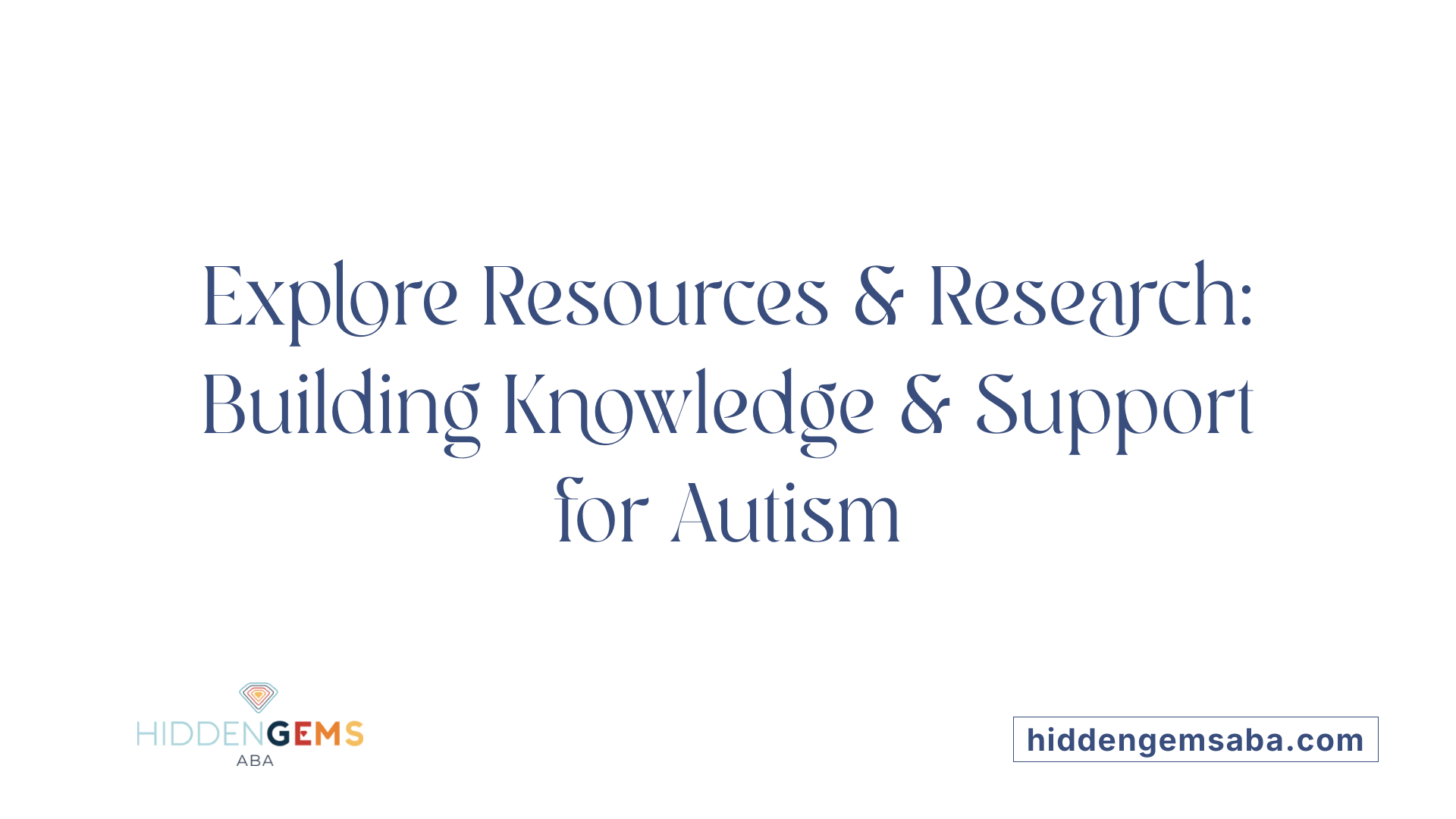A Month of Education, Advocacy, and Celebration
April marks a significant time dedicated to increasing understanding, acceptance, and support for individuals on the autism spectrum. Known as Autism Awareness Month, or more recently Autism Acceptance Month, this period is characterized by a variety of activities, campaigns, and initiatives that aim to foster a more inclusive society. Through education, advocacy, and community engagement, Autism Awareness Month serves as a powerful platform to highlight the talents of autistic individuals, promote neurodiversity, and address ongoing challenges faced by the autism community.
The Evolution and Significance of Autism Acceptance Month

What is the significance and purpose of Autism Awareness Month?
Autism Awareness Month, now often called Autism Acceptance Month, takes place every April. Its main goal is to promote understanding, inclusion, and acceptance of individuals on the autism spectrum. Throughout the month, efforts focus on educating the public about autism spectrum disorder (ASD), sharing stories that highlight the diverse experiences of autistic people, and advocating for support services that improve their quality of life.
This shift from mere awareness to acceptance emphasizes that autism is not just a diagnosis but a part of identity, community, and lived experience. By encouraging respect and understanding, the month aims to challenge stereotypes, reduce stigma, and foster environments where autistic individuals are celebrated for their talents and contributions. Ultimately, Autism Acceptance Month seeks to build a more inclusive society through education, advocacy, and respect for neurodiversity.
What is the history and societal impact of Autism Awareness and Acceptance Months?
The origins of Autism Awareness Month trace back to 1970, when it was established to shed light on autism and foster greater understanding. It gained official national recognition in 1988, making it a significant annual event. The Autism Society of America, founded in 1965, has been instrumental in leading advocacy efforts and supporting families affected by autism.
Over time, the focus has evolved significantly. The autistic community and advocacy organizations increasingly emphasized the importance of acceptance rather than just awareness. This was a response to the growing recognition of autism as a neurodiverse identity rather than simply a disorder requiring cure.
In 2021, the shift from
Activities, Campaigns, and Events During April
 During Autism Awareness Month, a variety of activities, events, and campaigns are organized to deepen understanding and foster acceptance of autism. One prominent activity is the observance of World Autism Awareness Day on April 2nd, marked by wearing blue around the world to initiate conversations about autism and challenge stereotypes.
During Autism Awareness Month, a variety of activities, events, and campaigns are organized to deepen understanding and foster acceptance of autism. One prominent activity is the observance of World Autism Awareness Day on April 2nd, marked by wearing blue around the world to initiate conversations about autism and challenge stereotypes.
Fundraising events play a vital role, with community-run bike rides, bake sales, virtual runs, and charity events supporting autism research programs and service initiatives. These activities not only raise funds but also boost visibility and community involvement.
Educational campaigns are widespread, with schools, workplaces, and community centers hosting activities like sharing autism facts, inviting guest speakers, screenings of autism-related films, and showcasing books that highlight diverse autism experiences. Art projects, including murals and sensory-friendly exhibits, help communities connect visually and emotionally.
Social media is a powerful tool during this period, featuring kindness challenges, awareness drives, and stories from autistic individuals. These digital campaigns are designed to dispel misconceptions, celebrate neurodiversity, and promote inclusion.
In terms of targeted outreach, Autism Speaks and other organizations promote initiatives like the 'Redefine Possible' movement, which emphasizes recognizing the talents and strengths of autistic people. They also provide autism-friendly training sessions, including a 30-minute Autism Friendly Training crafted with input from autistic individuals to teach communities how to create welcoming environments.
The CDC enhances this effort with comprehensive toolkits containing educational materials, social media guides, and community outreach ideas to promote acceptance and understanding. These initiatives collectively aim to transform perceptions, foster inclusive environments, and support individuals on the autism spectrum through active participation and education.
| Activity Type | Description | Audience | Additional Details |
|---|---|---|---|
| Awareness Day | Wearing blue, social media campaigns | General public | Sparks conversations, international participation |
| Fundraisers | Bike rides, bake sales, virtual runs | Community members | Support autism research and services |
| Educational Events | Guest speakers, film screenings, book displays | Schools, workplaces | Increase knowledge and empathy |
| Art Initiatives | Murals, sensory-friendly events | Local communities | Foster community engagement and expression |
| Campaigns & Training | 'Redefine Possible', autism-friendly training | Organizations, individuals | Promote strengths, create welcoming environments |
Supporting and Advocating for Autistic Communities

How can I get involved in autism acceptance and advocacy?
Getting involved starts with educating yourself about autism and listening to the voices of autistic individuals. Organizations like Autism Speaks, the Autism Society of America, and others dedicate efforts to foster policy changes, community inclusion, and awareness campaigns.
Participating in local activities such as autism-friendly events, advocacy rallies, or volunteers can make a tangible difference. Supporting these initiatives with donations or resources helps strengthen support networks for families and individuals.
Promoting respectful language, challenging stereotypes, and advocating for inclusive policies in education, healthcare, and employment are essential. Engaging both at the community level and in policymaking helps convert awareness into meaningful change.
By actively supporting these efforts, you contribute to a more accepting environment where autistic individuals can thrive and be fully valued.
What is the difference between autism awareness and autism acceptance?
Autism awareness focuses on sharing knowledge about autism through media, education, and outreach efforts. While it helps inform the public, it can sometimes unintentionally reinforce stereotypes or emphasize differences as problems.
Acceptance, however, involves embracing autistic individuals as complete persons. It recognizes their unique behaviors, talents, and needs, promoting inclusivity and community integration.
Acceptance is about creating a supportive environment that respects neurodiversity—the idea that autism is a natural variation of human diversity.
While awareness aims to inform and educate, acceptance seeks to empower autistic people to live fulfilling lives and participate fully in society.
Why is supporting inclusive policies and systems important?
Inclusive policies and support systems are vital for ensuring that autistic individuals have access to respectful, person-centered healthcare, quality education, and employment opportunities.
They help remove barriers that hinder community participation and reduce discrimination. Efforts like expanded early identification tools, community outreach, and legal protections foster a society where neurodiversity is understood and valued.
Organizations and advocacy groups actively promote these values, pushing for laws and practices that support inclusion across all life stages.
By advocating for comprehensive support systems, we help build a world where autistic individuals can achieve their potential and contribute their talents positively.
| Aspect | Focus Area | Examples & Impact |
|---|---|---|
| Involvement for individuals | How to participate in advocacy | Volunteering, donating, attending events, promoting respectful language |
| Role of organizations | Advocacy and policy influence | Campaigns like 'Autism Is', 'Road to Acceptance', community outreach |
| Policy and systemic change | Creating inclusive environments | Education reform, healthcare access, employment law |
Supporting the autism community involves action at multiple levels—from personal efforts to societal change. Each step brings us closer to acceptance, understanding, and a more inclusive world for all.
Educational Resources, Research, and Support Systems

What educational resources and research are available related to autism spectrum disorder?
A wide array of educational tools and ongoing studies aim to enhance understanding and support for individuals with ASD. Various organizations provide vital resources to families, educators, and healthcare providers.
The Autism Research Institute and Autism Speaks lead efforts by offering toolkits, educational materials, and community programs geared toward increasing awareness and implementing best practices. These include practical guides, online courses, and webinars focused on acceptance, early intervention, and tailored support.
Research initiatives such as the CDC’s Autism and Developmental Disabilities Monitoring (ADDM) Network play a significant role in collecting data on prevalence, age of diagnosis, and characteristics of autism across different communities. This information informs policy decisions and helps tailor services to meet diverse needs.
Programs like the Autism Center for Excellence at UC San Diego focus on groundbreaking research, assessments, and early developmental support. They provide families with access to diagnostic services, intervention planning, and resources to foster positive outcomes.
Educational materials extend to digital platforms offering manuals, videos, and community outreach campaigns. These aim to foster acceptance, promote early detection, and support individualized approaches for autistic people of all ages.
By combining research efforts with practical support tools, organizations strive to create more inclusive environments and ensure that families and professionals are well-equipped to meet the needs of those on the spectrum.
| Resource Type | Organization | What It Offers | Usage Examples |
|---|---|---|---|
| Educational Toolkits | Autism Speaks | Guides for families and schools | Workshops, online tutorials |
| Research Data | CDC ADDM Network | Autism prevalence and characteristics | Policy development, community support |
| Early Intervention Programs | UC San Diego Autism Center | Assessment and therapy services | Developmental tracking, personalized interventions |
| Educational Materials | Various nonprofits | Manuals, videos, outreach campaigns | Training sessions, community awareness |
This comprehensive support system highlights the ongoing commitment to creating an informed and inclusive society for people with autism.
Moving Toward a More Inclusive Future
April’s recognition of autism through awareness and acceptance efforts underscores the importance of fostering an inclusive society that respects diversity and champions the rights of autistic individuals. While awareness campaigns help educate the public, acceptance-driven initiatives foster genuine inclusion, empowerment, and respect. By engaging in community activities, supporting organizations, and promoting inclusive policies, we can all contribute to transforming perceptions and creating spaces where neurodiversity is celebrated. Autism Acceptance Month serves as a reminder that understanding, kindness, and acceptance are central to building a future where everyone can thrive.
References
- World Autism Month - Autism Speaks
- Autism Acceptance Month - Autism Society
- Autism Partner Toolkit | Autism Spectrum Disorder (ASD) - CDC
- April is Autism Awareness Month - URAC
- Autism Acceptance Month: Celebrate Differences - The Arc
- Autism Acceptance Month: The History and Impact - Neurology Advisor
- Autism Acceptance Month 2025 - Cerebral Palsy Guide



.jpg)


